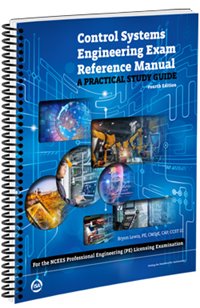
Note: A brief author biography is included at the bottom of this page.
Why did you feel it was important to write a new edition? What added value does it provide?
I have taken a plant-wide design approach in this new release to help the PE/CSE candidate better understand the design task given and successfully complete the task on the NCEES exam. The updated release also is designed to help prepare the controls engineer for the many large projects that will be emerging in the decade ahead. Manufacturing and chemical plants are about to meet what is called Industry 4.0, the fourth industrial revolution. Almost all plants will be network controlled and connected to the Internet, so focus should be placed on understanding industrial networking, switching and routing applications for industrial protocols.”
What areas of new content do you view as particularly important in helping candidates prepare for the NCEES exam?
Several new chapters have been added to prepare the PE/CSE candidate for the possible subject matter that may be presented on the professional engineer’s examination. New content matter of particular importance relates to:
- Valve sizing concerns of differential pressure limitations and cavitation when installed in in actual plant piping systems.
- Head type instrumentation for level and flow measurement and their calculations.
- Motor control applications.
- PLC and DCS programming and their implementation.
- Typical processes found in production plants and how to control these processes.
- The economic benefits of selecting a proper control scheme.
I’ve also introduced new calculations, sample problems and appendix tables that are intended to cover nearly all the data the PE/CSE candidate will need to answer questions on the examination.
What about areas of the book that you have enhanced or added to? Can you point out material that has been expanded on?
I’ve updated and expanded material on all important topic areas, including:
- Examination content as per the NCEES 2011 examination specifications
- Fluid mechanics for level and flow measurements
- Calculation of irregular tank volumes for a given level measurement
- Mass flow and two-phase flow
- Valve actuators and positioners
- Valve sizing and their installed characteristics applied to plant piping systems
- ASME, NFPA and EPA code requirements for pressure relief and release
- Control theory calculations, controller tuning and block algebra
- NFPA, IEC codes and the applications to hazardous classified locations
- Proper power, signal and communication cable usage, routing and sizing
- Understanding SIS (Safety Instrumented Systems) and their calculations
- Calculations for pumping and piping systems
- Networks for industrial and corporate interfacing of control systems
- Electrical power quality, harmonic generation and filtering
- Motion control systems
- Pneumatic and hydraulic systems
- Sizing emergency standby systems
